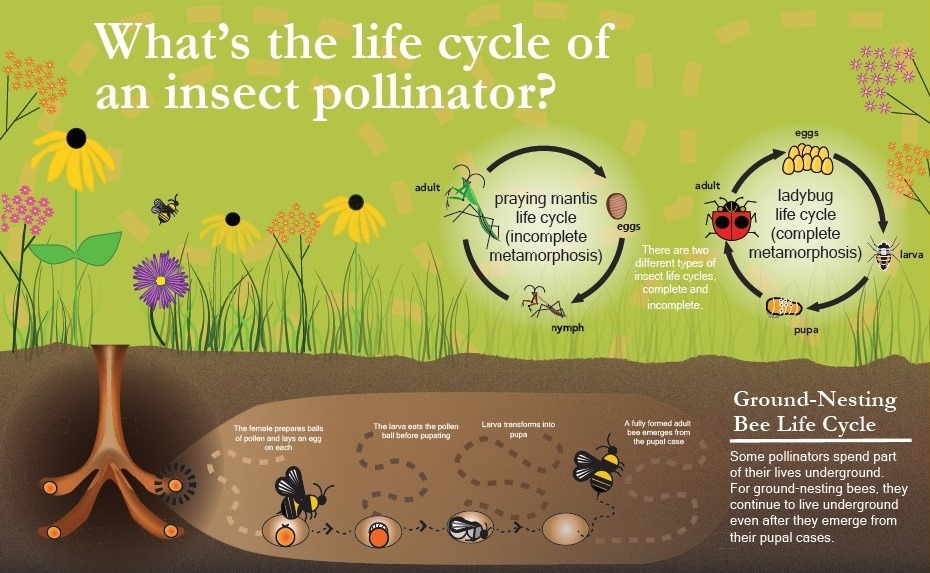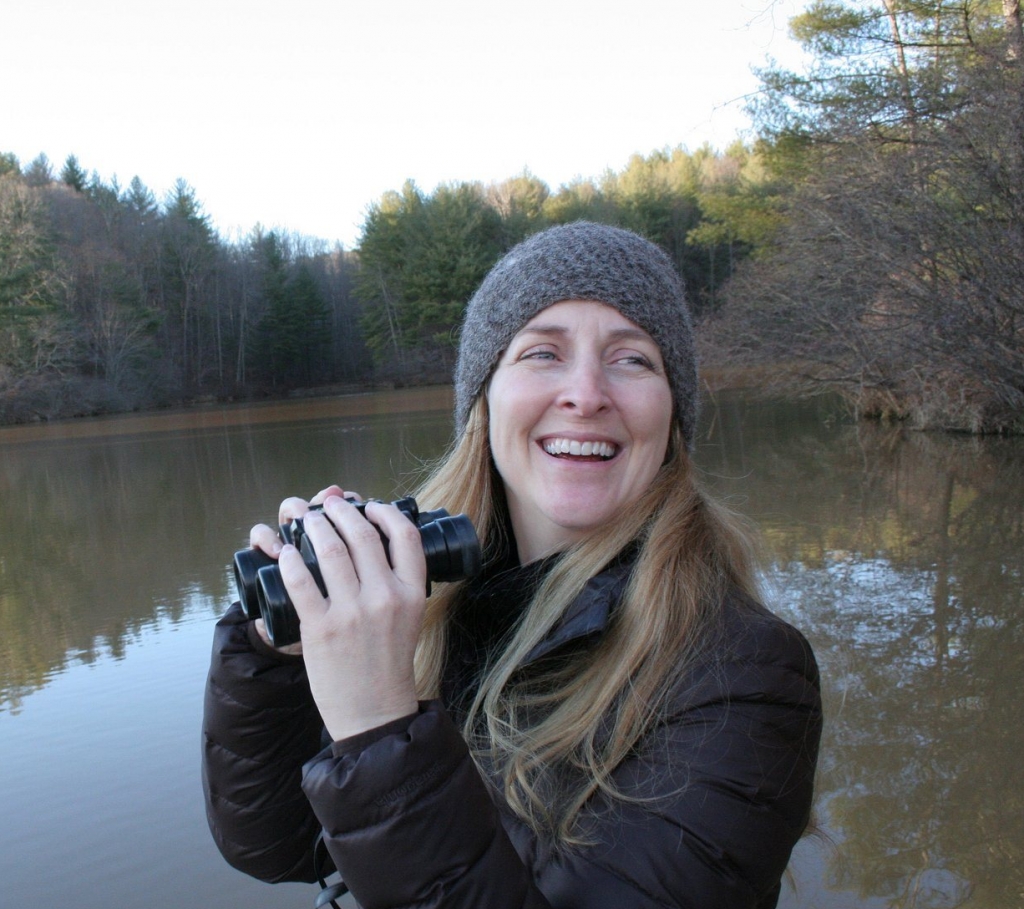
Signs of spring are around us! Mayapples and bloodroot are pushing up out of the soil with leaves wrapped around should there be a chill. Dogwoods are unfurling creamy white bracts and redbuds are parading fuschia flowers on each still-bare branch. What welcome sights! As temperatures consistently warm, we’ll see more and more flowers and more and more pollinators.
One of the first pollinators to venture out in the spring is the bumblebee. Native bumblebees are colonial bees with a life cycle lasting one year. These bees demonstrate why year-round pollinator plants are essential.
In the fall, young female bumblebees—destined to become the next year’s queens—will mate and begin stocking up on nectar and pollen gathered from late-flowering asters, goldenrods, and ageratum to last through the winter. The queens alone will survive the winter but first must find a safe place—in the leaf litter under a shrub, in a tangle of last summer’s grass stems, or in an abandoned rodent’s hole—to enter into a resting state called diapause.
In the spring, the new queen bumblebees emerge to create new colonies. They urgently need early-flowering plants rich in nectar and pollen to rebuild strength and raise their first broods. Enter redbuds, maples, hawthorns, anemone, trillium, violets, early blueberries, and vines such as native coral honeysuckle and yellow (or Carolina) jessamine.
For bees, nectar is their primary carbohydrate and pollen is an essential source of lipids and protein. Both are essential foods for the workers, the queen, and the growing larvae.
The first brood of bees born will all be female worker bees who will collect pollen and nectar for the growing colony while the queen lays eggs throughout the spring and summer. As the colony grows larger, the bees visit and pollinate more plants.
Not until mid-summer are reproductive bumblebees born, including males and the females that will be next year’s queens.
By offering a variety of plants that flower from March until the first hard frost, pollinator gardens provide nutrients for the entire lifecycle of bumblebees and other pollinators.
Only when pollinators are sustained throughout their entire lifecycle can they fulfill the most important ecosystem service we rely on: crop pollination.

Teri Nye is a member of Park Pride’s Visioning team, bringing international experience in the design of parks and urban greenspaces, an expertise in Georgia native plants, and over ten years of experience in community outreach and education while at Fernbank Science Center and Brenau University. She holds a master of landscape architecture degree from the University of Georgia and a bachelor of science with a concentration in botany from James Madison University.
